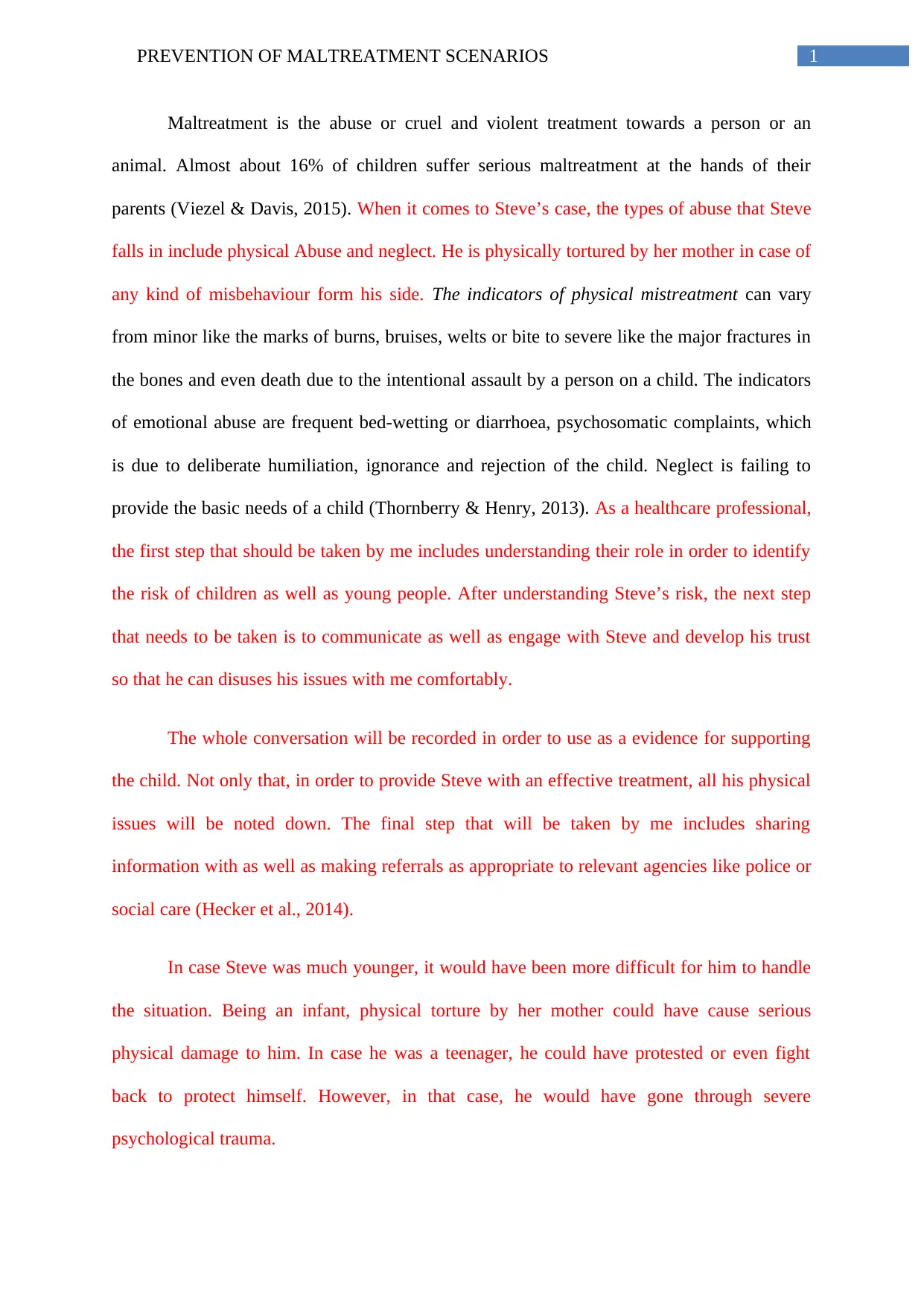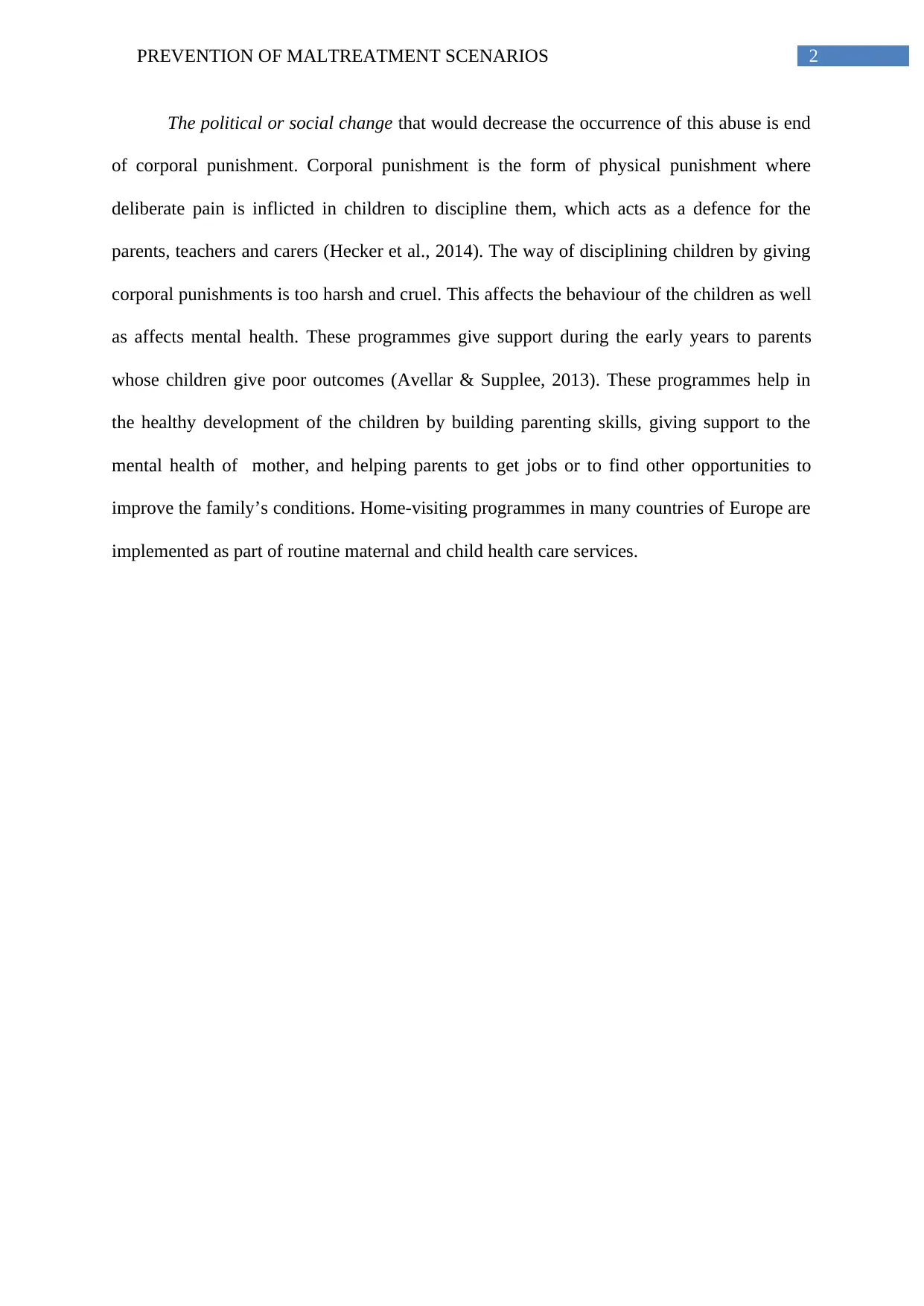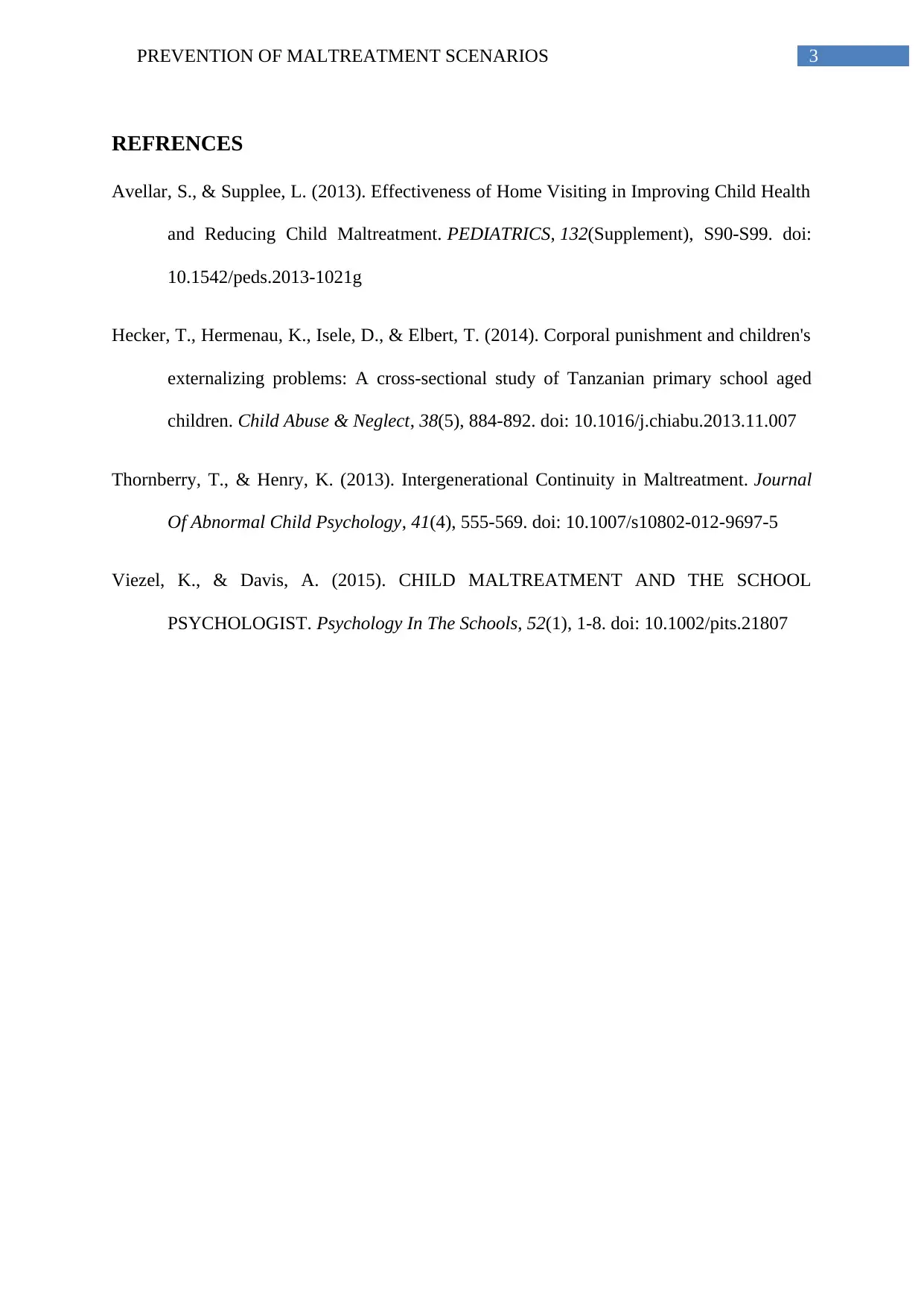University Report: Prevention of Maltreatment Scenarios Analysis
VerifiedAdded on 2023/04/10
|4
|631
|488
Report
AI Summary
This report addresses the critical issue of child maltreatment, defining various forms of abuse such as physical and emotional abuse, and neglect. It emphasizes the role of healthcare professionals in identifying risks, building trust with children, and reporting cases to relevant agencies. The report highlights the impact of maltreatment on children of different ages, from infants to teenagers, and discusses political and social changes, such as ending corporal punishment, to decrease the occurrence of abuse. Furthermore, it explores the importance of programs that support parents, promote healthy child development, and provide home-visiting services. The report references key studies and provides a comprehensive overview of the issue, offering practical insights into prevention and intervention strategies.
1 out of 4











![[object Object]](/_next/static/media/star-bottom.7253800d.svg)